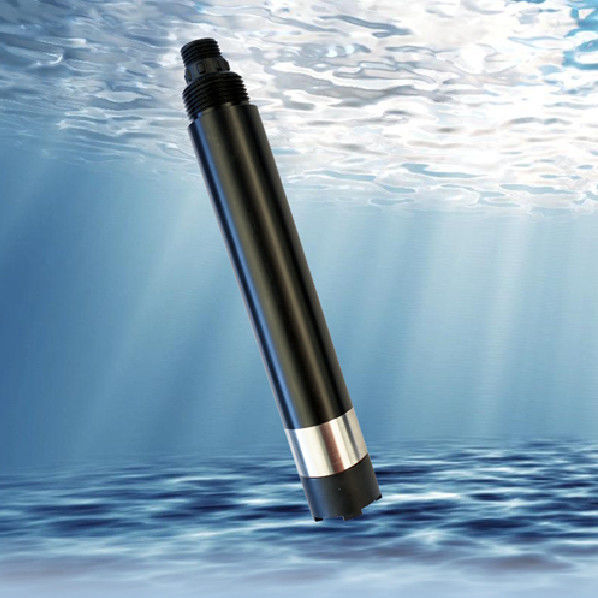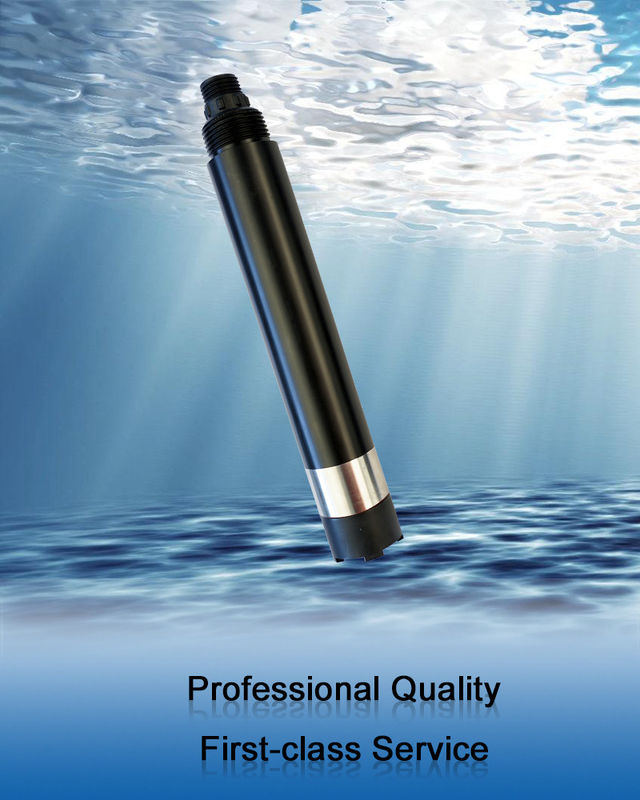1원칙
KFDO310 통합 온라인 형광 용해 산소 센서는 물리학에서 특정 물질의 흥분된 형광의 소화 원리에 기초하여 설계 및 제조됩니다.빛 방출 다이오드에서 파란색 빛은 형광 캡의 내부 표면에 있는 형광 물질을 조명내부 표면의 형광 물질은 흥분되어 빨간 빛을 방출합니다. 빨간 빛과 파란색 빛 사이의 단계 차이를 감지함으로써,그리고 내부 정정 값과 비교, 산소 분자의 농도를 계산할 수 있으며, 최종 값은 온도 자동 보상으로 출력 할 수 있습니다.
2특징
- 전해질도 없고 양극화도 없습니다.
- 산소를 소비 할 필요가 없습니다, 흐름 속도에 영향을받지 않습니다
- 내장 온도 센서, 자동 온도 보상
- 황화물 같은 화학물질이 없거나
- 작은 이동, 빠른 반응, 더 정확한 측정
- 유지보수 없이, 긴 사용 기간, 낮은 사용 비용
- 형광 뚜?? 을 쉽게 교체 할 수 있다
- RS-485 인터페이스, Modbus-RTU 프로토콜
3기술 사양
| 모델 번호 |
KFDO310 |
| 측정 원칙 |
형광 |
| 범위 |
0ー20 mg/L (0ー200% 포화, 25 °C) |
| 결의 |
00.01 mg/l, 0.1 °C |
| 정확성 |
± 2% f.s , ± 0.5 °C |
| 온도 보상 |
자동 온도 보상 (PT1000) |
| 출력 모드 |
RS-485 버스, Modbus-RTU 프로토콜 |
| 노동 조건 |
0ー45 °C, < 0.2mpa |
| 저장 온도 |
- 5 ~ 65 °C |
| 설치 모드 |
잠수식 장착 |
| 케이블 길이 |
5 미터, 다른 길이 사용자 정의 될 수 있습니다 |
| 전력 소비 |
< 0.05W |
| 전원 공급 |
12 ~ 24 VDC ± 10% |
| 보호 수준 |
IP68 |
| 캘리브레이션 |
2점 계정 |
| 플루오레센트 캡 수명 |
1 년 동안 사용 보장 (정상적인 사용) |
| 센서 하우징용 재료 |
폼 및 316L 스테인리스 스틸 |
4.차원 도면

5설치 및 전기 연결
설치

온도 감지 부분은 필름 헤드 표면과의 충돌을 피하기 위해 액체 표면 아래에 잠겨 있어야 합니다.
팁:갈바닉 용해된 산소 센서

갈바닉 용해된 산소 센서의 가로 절단
최종 전기 화학 용해 산소 센서는 갈바닉 산소 센서입니다. 갈바닉 용해 산소 센서에서는 전극이 서로 다른 금속입니다.금속은 활동열에 따라 서로 다른 전자기능력을 가지고 있습니다. (전자를 얼마나 쉽게 주고 받는지)17전해질 용액에 넣을 때, 서로 다른 금속들 사이의 잠재력은16이 자기 양극화는 galvanic DO 센서가 어떤 따뜻한 시간이 필요하지 않습니다. 외부 적용 전력없이 산소를 줄이기 위해,안도와 카토드 사이의 전력 차이는 적어도 0이어야 합니다..5 볼트16.
갈바닉 용해 된 산소 센서의 안도 는 보통 진크, 납, 또는 다른 활성 금속이고, 카토드는 은 또는 다른 귀금속입니다.3전해질 용액은 수산화 나트륨, 염화 나트륨 또는 다른 무활 전해질이 될 수 있습니다.8,27전화화학적 반응은 폴라그래픽 DO 센서와 매우 유사하지만 별도의 일정한 전력이 필요하지 않습니다.서로 다른 전극은 자기 양극화, 전자가 안오드에서 카토드까지 내부로 이동하는7카토드는 무활성으로 유지되며, 전자를 전달하는 데만 사용되며 반응에 간섭하지 않습니다.20따라서, 안오드는 산화되고 카토드 표면에 산소가 감소된다. 이러한 반응은 다음과 같이 발생합니다.

Zn/Pb zinc 또는 납 아노드
NaCl 및 H2O ∆ 나트륨 염화물 용액
AG ∙ 은 전극 * 무활성 전극, 반응하지 않는다 *
진크 아노드 반응 및 산화
2Zn-> 2Zn2++ 4e∙
은 카토드 반응 및 산소 감소
*Ag 카토드는 무활성이고 반응에 참여하지 않고 전자를 통과합니다*18
오2+ 4e∙+ 2H2O -> 4OH∙
4OH∙+ 2Zn2+2Zn (OH)2
전체적 인 반응
오2+ 2H2O + 2Zn ∙-> 2 Zn (OH)2
포로그래픽 용해된 산소 센서 반응과 마찬가지로, 카토드는 관성 전극이기 때문에 방정식에서 제외됩니다.18은성극은 안도에서 전자를 받아들이고 산소 분자에 전달합니다. 이 거래는 성극 표면에 발생합니다.8산소 감소에 의해 생성되는 전류는 물 샘플의 산소의 부분 압력에 비례합니다.15.
이 반응 에서 생성 되는 아연 수산화물 은 전해질 용액 에 침착 되어 있다. 이 침착물 은 센서 끝 에서 흰색 고체 로 보이게 된다7이 침착물은 안오드를 코팅하거나 전해질을 소비하지 않으며, 따라서 양이 과도하게 될 때까지 센서의 성능에 영향을 미치지 않습니다.그것은 이온의 역량을 방해 할 수 있습니다22센서 출력이 비정상적으로 낮거나 판독이 안정화되지 않을 경우 전해질 용액을 교체해야합니다.7.
갈바닉 DO 센서의 전극이 자기 양극화 되므로, 진크의 산화는 기기가 사용하지 않더라도 계속 발생합니다.갈바닉 용해 된 산소 센서는 진크 안ोड이 소비 되더라도 효율적으로 작동 합니다, 비록 그것은 polarographic DO 센서보다 더 자주 교체 할 필요가 있습니다.

 귀하의 메시지는 20-3,000 자 사이 여야합니다!
귀하의 메시지는 20-3,000 자 사이 여야합니다! 이메일을 확인하십시오!
이메일을 확인하십시오!  귀하의 메시지는 20-3,000 자 사이 여야합니다!
귀하의 메시지는 20-3,000 자 사이 여야합니다! 이메일을 확인하십시오!
이메일을 확인하십시오! 


